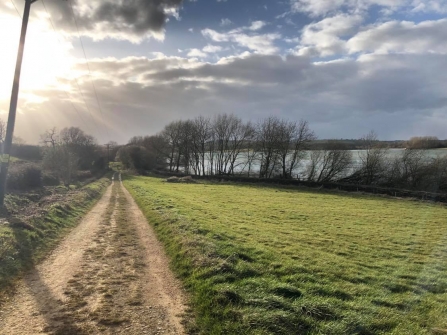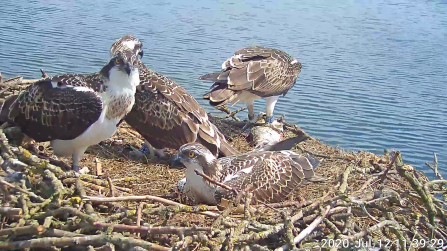Osprey Education Officer, Ken Davies, has written this beautiful blog entry about his most recent visit to Lyndon to see the Manton Bay Ospreys...
I ease the car slowly down the steep hill towards the Lyndon car-park. Low cloud, light but persistent drizzle, dripping hedgerows and trees. My first visit since March 15th, when the Ospreys were not even back. There are a few parked cars, mostly respectfully distanced from each other. The staff cars form a bubble of their own, close together and totally at ease, just like their owners. I park with them.
I negotiate the cones, each with its note informing me how to proceed towards the Centre. I hesitate at the door, but I am soon ushered in by a familiar voice. The welcome is genuine and sincere, and immediately all the tension and anxiety I felt earlier as I drove here is dispelled. How lucky we are to have these people working here with us, committed to bringing the Reserve back to life again after its long period of closure. The interior of the Visitor Centre, though much changed in appearance to conform with regulations, still exudes a warmth and friendliness guaranteed to put even the most nervous visitor at ease. I follow the duck’s feet painted on the floor and move to the big open space which allows people to stand apart without bumping into furniture, and soon there is a cup of tea in my hand and we are chatting as we always did until so sorely interrupted four months ago now. I feel internally lifted, exalted even, by the welcome back this afternoon….and I haven’t even seen an Osprey yet!
The track to the Waderscrape hide, so familiar after hundreds, maybe thousands, of walks over the years, is strangely ‘new’ and different today. The orchid I always check on at one point is long gone. I have missed the two months of full birdsong, May and June, but on this overcast and murky afternoon there are still a few snatches of summer with a raspy Whitethroat, a cheery Chiffchaff and a showy Chaffinch or two. The Reservoir on my right is grey and brooding, Mute Swans gathered in large numbers on the far shore, a single fishing boat (No.45) looking like a toy, its occupant motionless in his own world. I pass a few people going back towards the Centre. We acknowledge one another with a nod or a short greeting, keeping well to our own edge of the track. No-one stops to chat.



